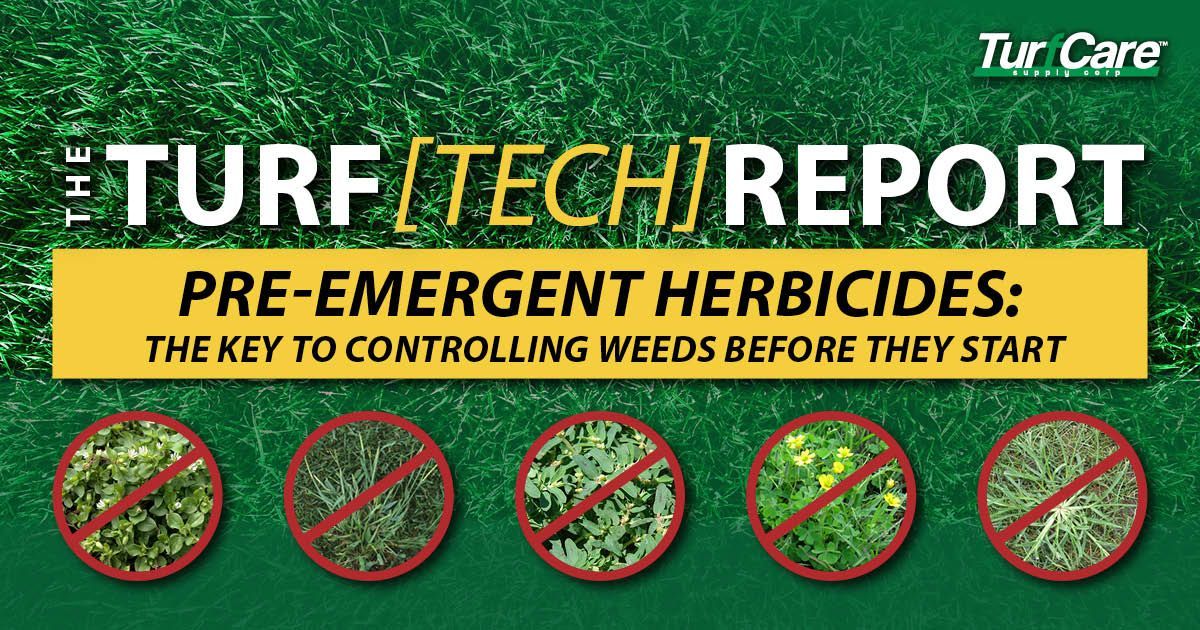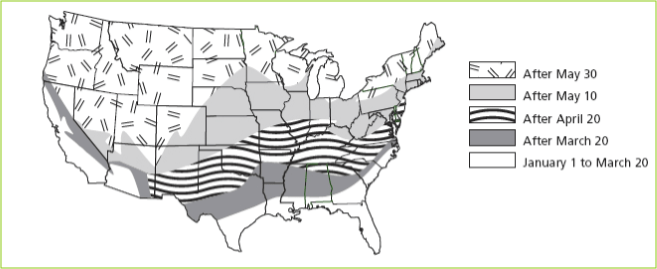Turf[TECH]Report - Pre-Emergent Herbicides: The Key to Controlling Weeds Before They Start


Many perennial weeds also release seeds in mid-late summer in the hopes that the seeds might germinate and root before the arrival of winter. Additionally, while pre-emergent herbicides may be successful at preventing weeds from growing in your own yard (and producing more seeds…), many seeds are transported into your yard by the wind. For these reasons, a late summer/early fall pre-emergent application should also be considered. Many landscape professionals use a pre-emergent herbicide coated onto a high-nitrogen fertilizer to avoid having to make two separate fall applications (in essence, a fall weed & feed).
WHAT CAN PRE-EMERGENT HERBICIDES BE USED ON?
Most pre-emergent herbicides are effective against many grasses (monocots) and broadleaf weeds (dicots). Considered to be a one of the most obnoxious lawn invaders, many pre-emergents also control crabgrass, however some products require multiple applications for effective control. If you have a crabgrass infestation, be sure to read the label carefully before purchasing to ensure the product will be effective.
LIST OF THE MOST COMMON WEEDS CONTROLLED BY MOST PRE-EMERGENTS.
- Annual bluegrass (Poa annua)
- Barnyard grass
- Carpetweed-04
- Chickweed (common)
- Chickweed (mousear)
- Crabgrass (large and smooth)
- Crowfoot grass
- Cup grass (woolly)
- Foxtails (annual),
- Goosegrass
- Henbit
- Itchgrass
- Johnsongrass (seedling)
- Jungle rice
- Knotweed
- Kochia
- Lambs quarters (common)
- Lovegrass, Panicum (browntop, fall and Texas)
- Pigweed
- Purslane (common)
- Pusley (Florida)
- Rescue grass
- Shepherd spurse
- Signal grass (Broadleaf)
- Speedwell (Persian)
- Sprangle top
- Spurge (prostate)
- Witchgrass
- Wood sorrel (yellow, from seed)
WHAT GRASSES ARE SAFE TO USE WITH MOST PRE-EMERGENT HERBICIDES?
- Bermuda grass
- Bahia grass
- Centipede grass
- Kikuyu grass
- Seashore Paspalum
- St. Augustine grass
- Tall Fescue (including turf-type)
- Fine Fescue
- Zoysia grass
- Buffalo grass
- Kentucky Bluegrass
- Perennial Ryegrass
- Creeping Bentgrass (0.5 inches or more in height)
NOTE: If in doubt on your grass species, refer to the
Turf Grass Climate Regions Info Graph and consult with your local lawn care expert to determine the best pre-emergent product to use on your turf grass.
WHAT SHOULD A PRE-EMERGENT HERBICIDE NEVER BE USED ON?
Pre-emergent herbicides should NEVER be used on or around newly seeded grass, newly applied sod, or any plants being grown from seed (such as herbs, vegetables, and wild flowers). If you want to grow anything that is being started from seed, don’t use pre-emergent herbicides on or near those plants.
WHAT ARE EXAMPLES OF PRE-EMERGENT HERBICIDES AVAILABLE AT TURF CARE?
TurfCare™ Supply has a wide variety of pre-emergent control products. These herbicides can be coated onto fertilizer, soil amendments, or carriers. Such examples include:
- Barricade
- Dimension
- Echelon 4SC
- Evade 4FL
- Oxadiazon
- Pendimethalin
- Pre-M
- Prodiamine
- Ronstar
- Spectile
- Stonewall
For professional fertilizers, humic and AMP-XC™ enriched products available, please visit TurfCare’s online Product Catalog.
For green industry professionals or others interested in ordering Turfcare products, please contact our Customer Service to find a distributor near you.
The TURFReport Highlights:
Additional Articles and Insights
















